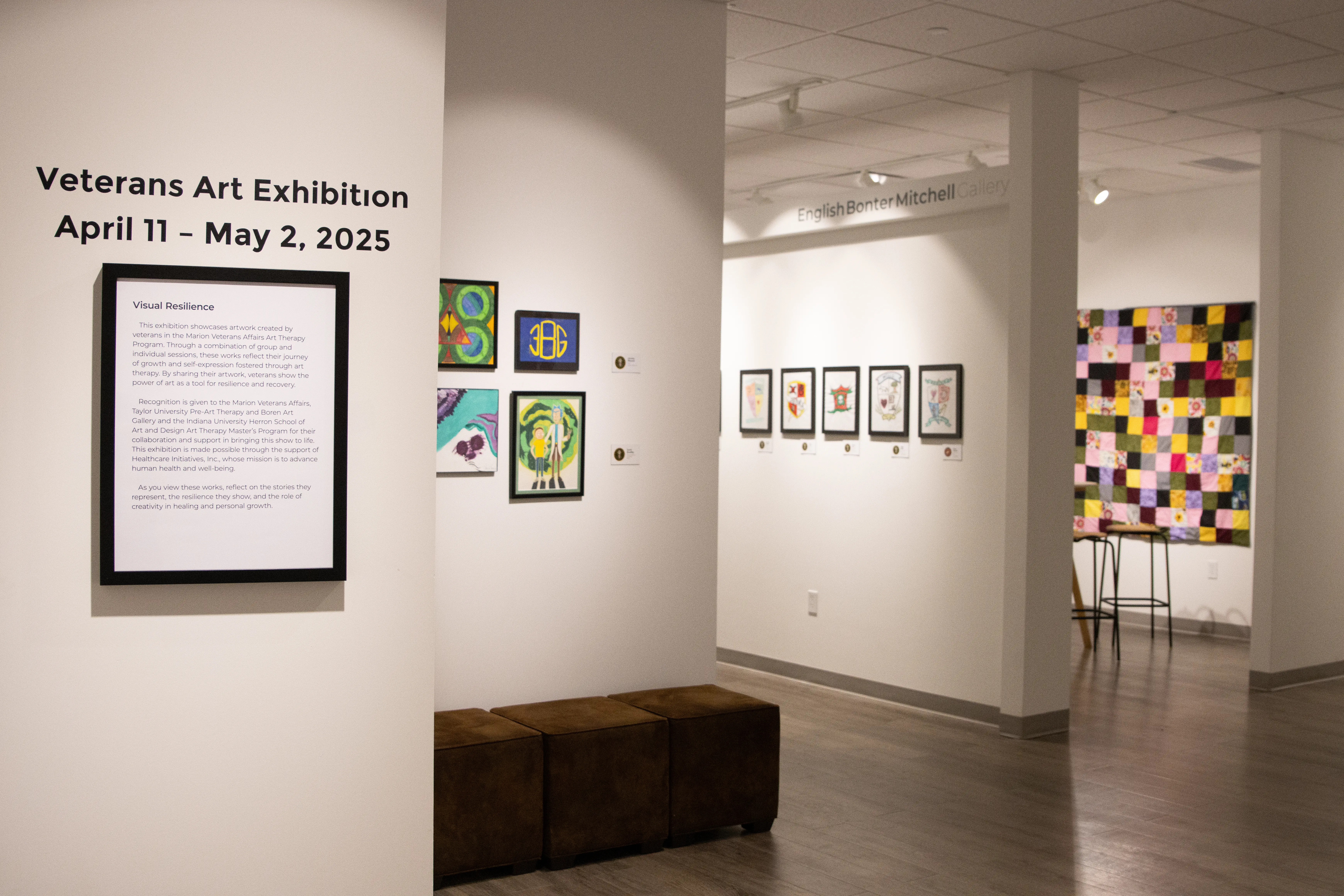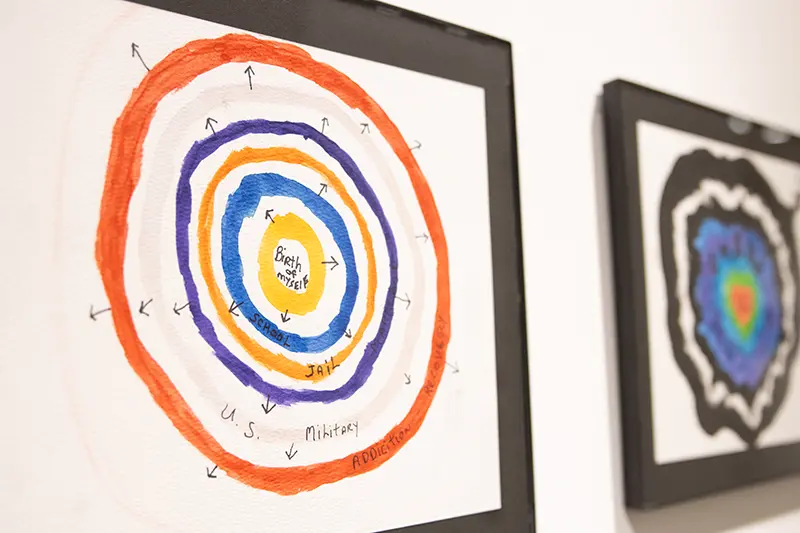-
-
- Financial Aid
- Financial Aid
- Scholarships
- Loans
- Grants
- Federal Work Study
- Additional Resources
-

A recent exhibit at the Boren Art Gallery invited students, faculty, and the community to explore the role of creativity in recovery. The exhibit was the product of a service-learning collaboration between Taylor’s Department of Art and Indiana University Indianapolis’ Veterans Art Therapy program. From April 11 to May 2, it featured works created by veterans as part of their therapeutic process.
Hannah Richardson, Assistant Professor of Art Education and Pre-Art Therapy, formed the connection through her association with Taylor McLane, an art therapist at the VA Marion. When McLane was searching for a space to showcase the work of her clients, Richardson saw an opportunity to bring meaningful, real-world experiences to her students.
“This is very different art than Taylor University has had before,” Richardson said. “It’s an opportunity to bring tangible stories to campus, not just hypothetical situations we talk about in class, but real people and their real experiences.”
The exhibit displayed a wide range of work, including group projects, structured prompts, and freeform expression. From intricately felted fiber pieces to shield-shaped representations of identity and strength, each prompt was selected intentionally to meet clients’ emotional and psychological needs.
“Art therapy helps clients find healing through both creating and processing the work,” Richardson said. “It can disclose unconscious thoughts or help organize internal chaos into something visual and shareable.”
Each piece was a reflection of the artist’s unique process and journey. Some pieces were meditative and ordered, while others appeared more fluid and expressive. One veteran’s work paired visual imagery with poetry.
“The reason why he wanted these words to be shown was to encourage others who might be experiencing some of these same things,” Richardson said about the artist. “I was able to say to him that he was able to help train future art therapists. So, the people who were giving him help, his art helped them to connect in a real way to the power of something like this.”

For Taylor students, especially those studying Pre-Art Therapy, this exhibit wasn’t just something to observe. Students helped curate and install the show, created labels, attended the opening, and engaged in thoughtful discussions.
“These kinds of hands-on experiences give our students real insight into the administrative and emotional dimensions of working in this field,” Richardson said.
The collaboration is also a display of Taylor’s broader commitment to faith-informed learning and service. It’s not just about content. It’s about how learning reflects God’s image and care.
“Even our worship and learning can become self-centered if we’re not careful,” Richardson said. “Service-learning done well reminds us that it’s not about us. It’s about others.”
This encounter in the Boren Art Gallery helped students shift their focus outward and deepen their understanding of their vocation. Through service-learning experiences like this, students are given the opportunity to see their discipline as a means of ministry.
To become a licensed art therapist, graduate school is the next step after college. By choosing a concentration of either studio or counseling, students are able to specialize in their interest area and be better equipped for graduate school and beyond. Taylor’s most recent program graduates are in graduate school earning their Master’s in Art Therapy focusing on Studio Art Therapy or Art Psychotherapy.